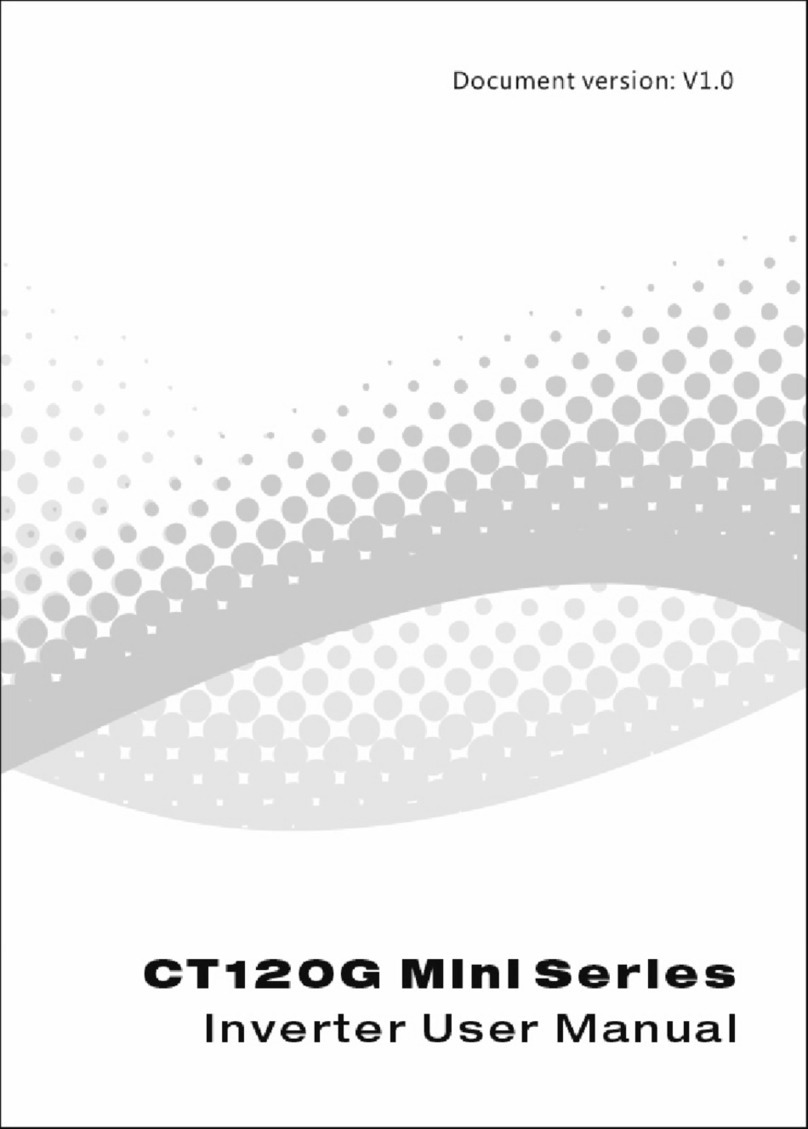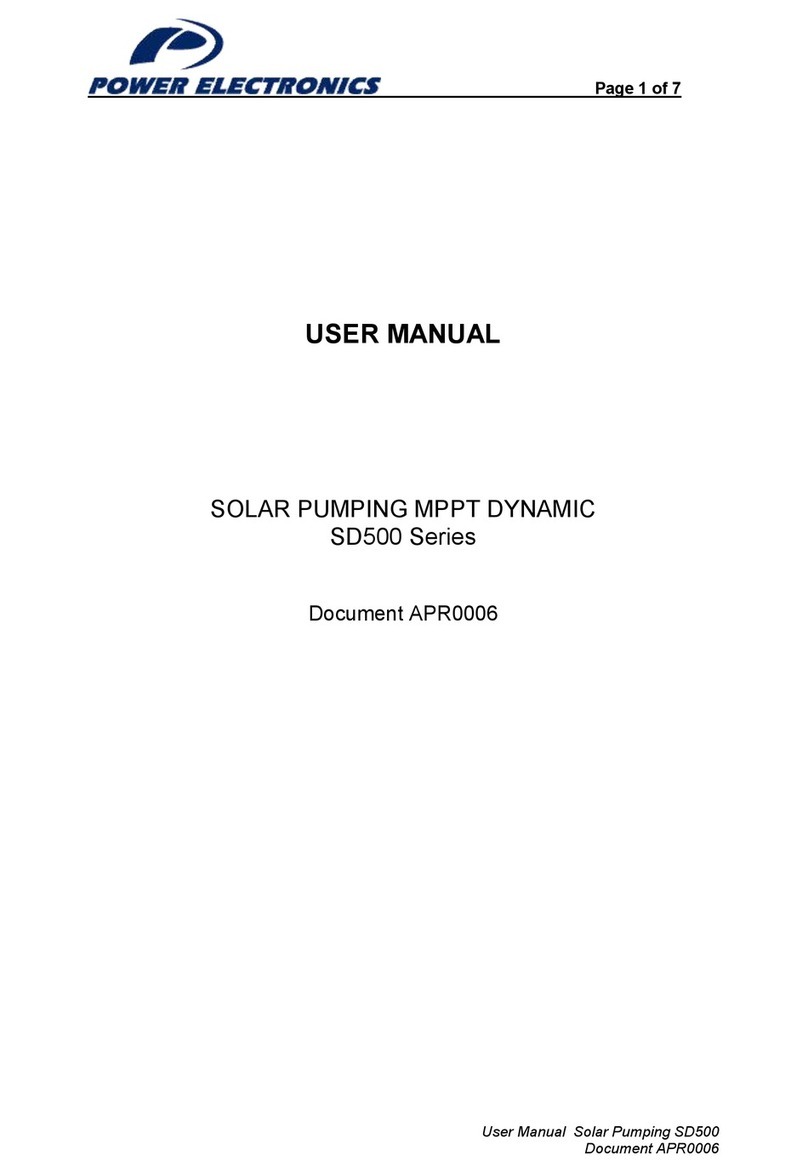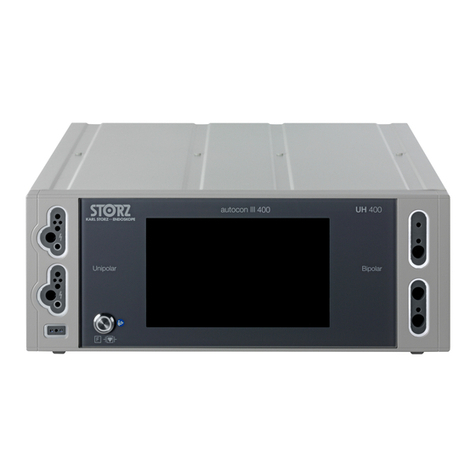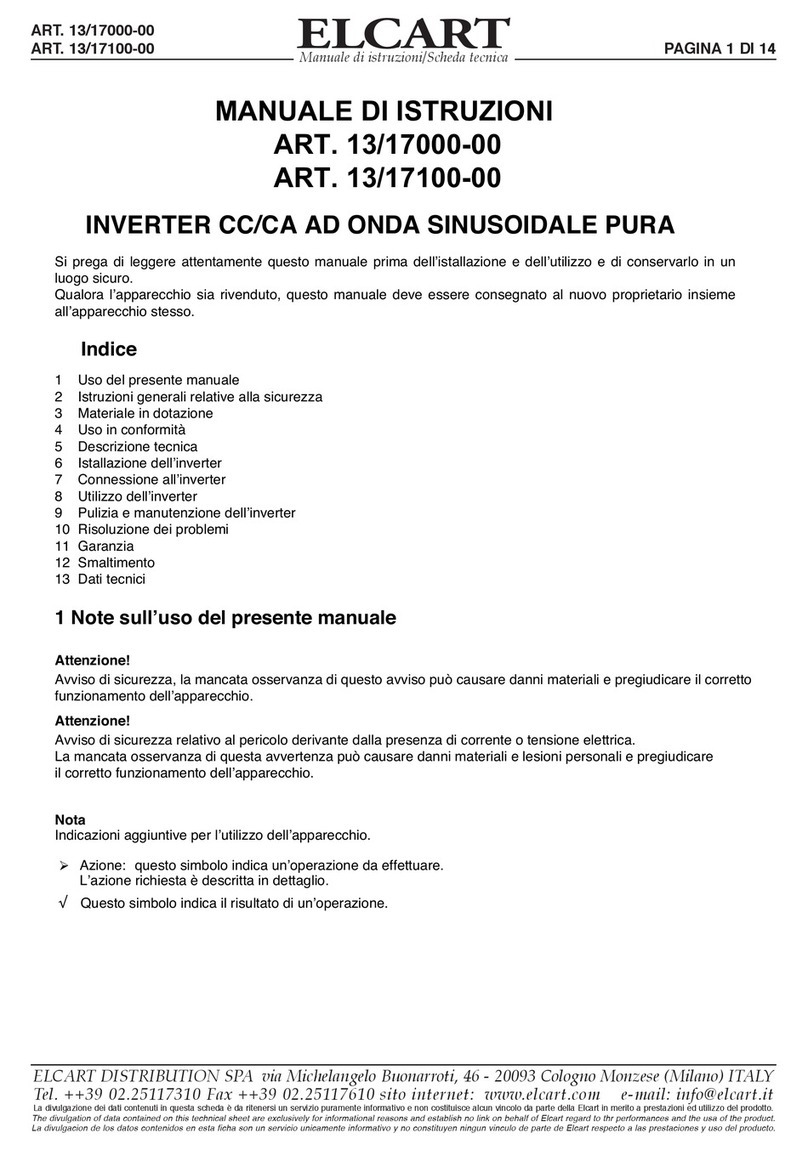Digital Instruments MXS-EVO Assembly instructions

-------------------------------------------------------------------------------------------------------------------------------------------------------------------------------------------------------------------------------------------------------------------------------------------------
-
--
--
--
--
--
--
--
--
--
--
--
--
--
--
--
--
--
--
--
--
--
--
--
--
--
--
--
--
--
--
--
--
--
--
--
--
--
--
--
--
--
--
--
--
--
--
--
--
--
--
--
--
--
--
--
--
--
--
--
--
--
--
--
--
--
--
--
--
--
--
--
--
--
--
--
--
--
--
--
--
--
--
--
--
--
--
--
--
--
--
--
--
--
--
--
--
--
--
--
--
--
--
--
--
--
--
--
--
--
--
--
--
--
--
--
--
--
--
--
--
--
--
--
--
--
--
--
--
--
--
--
--
--
--
--
--
--
--
--
--
--
--
--
--
--
--
--
--
--
--
--
--
--
--
--
--
--
--
--
--
--
--
--
--
--
--
--
--
--
--
--
--
--
--
--
--
--
--
--
--
--
--
--
--
--
--
--
--
--
--
--
--
--
--
--
--
--
--
--
--
--
--
--
--
--
--
--
--
--
--
--
--
--
--
--
--
--
--
--
--
--
--
--
--
--
--
--
--
--
--
--
--
--
--
--
--
--
--
--
--
--
--
--
--
--
--
--
--
--
--
--
--
--
--
--
--
--
--
--
--
--
--
--
--
--
--
--
--
--
--
--
--
--
--
--
--
--
--
--
--
--
--
--
--
--
--
--
--
-
MXS-EVO
Disciplined RF Generator
Rev 1.7

MXS-EVO - MANUAL
-------------------------------------------------------------------------------------------------------------------------------------------------------------------------------------------------------------------------------------------------------------------------------------------------
MXS-EVO – Manual – Rev 1.7 - 2 -
Dichiarazione di conformità
Declaration of conformity
La Ditta
The Company
DIGITAL INSTRUMENTS S.r.l.
Via Parco degli Scout, 13
20091 BRESSO (MI) ITALY
Dichiara con la presente che il Prodotto
Herewith declares that the Product
Tipo / Type Disciplined RF Generator with Multiple Sources
Modello / Model MXS-EVO
Serial Number 0140 /
Oggetto di questa dichiarazione è conforme ai seguenti standard o norme della Comunità Europea
Referred to by this declaration is in conformity with the following standards or normative documents of EC
Norme Europee Armonizzate
European Armonized Standards
CEI EN 61000-6-4:2007
Electromagnetic compatibility (EMC) - Part 6-4: Generic standards -
Emission standard for industrial environments
CEI EN 61000-6-2:2006
Electromagnetic compatibility (EMC) - Part 6-2: Generic standards -
Immunity for industrial environments
CEI EN 55011:2011 Limits and methods of measurement of radio disturbance characteristics of
industrial, scientific and medical (ISM) radio-frequency equipment
CEI EN 61000-4-2:2011
Electromagnetic compatibility (EMC) - Part 4-2: Testing and measurement
techniques - Electrostatic discharge immunity test
CEI EN 61000-4-3:2007+A1:2009+A2:2011
Electromagnetic compatibility (EMC) - Part 4-3: Testing and measurement
techniques - Radiated, radio-frequency, electromagnetic field immunity test
CEI EN 61000-4-4:2006+A1:2010
Electromagnetic compatibility (EMC) – Part 4-4:Testing and measurement
techniques – Electrical fast transient/burst immunity test
CEI EN 61000-4-5:2007
Electromagnetic compatibility (EMC) - Part 4-5: Testing and measurement
techniques - Surge immunity test
CEI EN 61000-4-6:2011
Electromagnetic compatibility (EMC) - Part 4-6: Testing and measurement
techniques - Immunity to conducted disturbances, induced by radio-
frequency fields
CEI EN 61000-4-8:1997+A1:2001
Electromagnetic compatibility (EMC) - Part 4-8: Testing and measurement
techniques - Power frequency magnetic field immunity test
CEI EN 61000-4-11:2010
Electromagnetic compatibility (EMC) - Part 4-11: Testing and measurement
techniques - Voltage dips, short interruptions and voltage variations
immunity tests
CEI EN 60204-1:2006+A1:2010
Safety of machinery - Electrical equipment of machines - Part 1: General
requirements
Bresso, October 2012
DIGITAL INSTRUMENTS S.r.l.
Via Parco degli Scout, 13
20091 BRESSO (MI) ITALY
Marco Genova
Quality Assurance Manager

MXS-EVO - MANUAL
-------------------------------------------------------------------------------------------------------------------------------------------------------------------------------------------------------------------------------------------------------------------------------------------------
MXS-EVO – Manual – Rev 1.7 - 3 -
Istruzioni di sicurezza
Safety Instructions
Il dispositivo è stato progettato, costruito e collaudato in conformità alle normative richiamate nel Certificato di
Conformità ed è stato rilasciato dal costruttore completamente testato secondo gli standard di sicurezza. Per
mantenere questa condizione e assicurare la sicurezza d’uso, l’utente deve osservare tutte le istruzioni e
segnalazioni di pericolo descritte in questo manuale.
This unit has been designed and tested in accordance with the EC Certificate of Conformity and has left the
manufacurer’s plant in a condition fully complying with safety standard. To maintain this condition and to ensure safe
operation, the user must observe all the instructions and warnings given in this operating manual.
Prima di mettere in servizio il dispositivo, leggere attentamente ed integralmente le istruzioni per l’uso.
Osservarle e seguirle in tutti i punti. Provvedere in modo che le istruzioni per l’uso siano sempre
accessibili a tutti gli addetti.
Prior to switching on the unit, please read carefully the instructions on the manual. Keep this manual
available for all every user of this equipment.
Il terminale PE sul dispositivo deve essere connesso al conduttore PE prima di eseguire qualsiasi altra
connessione. L’installazione ed il cablaggio devono essere eseguiti da personale tecnico qualificato.
The PE terminal of the unit must first be connected to the PE conductor on site before any other connections
are made. Installation and cabling of the unit to be performed only by qualified technical personnel.
Lo strumento supporta alimentazione AC wide range da 95 Vac a 240 Vac e deve essere connesso
tramite protezione con corrente nominale massima pari a 16A.
This unit may be operate from wide range AC supply networks from 95 Vac to 240 Vac fused with max. 16A.
Lo strumento supporta alimentazione DC wide range da 20 Vdc a 50 Vdc e deve essere connesso
tramite protezione con corrente nominale massima pari a 5A. Il circuito di protezione contro
l’inversione di polarità è implementato a bordo.
This unit may be operate from wide range DC supply networks from 20 Vdc to 50Vdc fused with max.
5A.Circuit against polarity inversion is also implemented.
Le condizioni di sicurezza vanno testate ad ogni sostituzione. Ispezione visiva dei cavi, stato
dell’isolamento, corrente di dispersione, stato del connettore PE e test funzionale.
A safety test must be performed after each replacement of part. Visual inspections, PE conductor test,
insulation resistance, leakage-current measurement, functional test.
Non interrompere il conduttore PE in nessun caso. Un interruzione del cavo PE rende l’apparato
elettricamente pericoloso.
It is not permissible to interrupt PE conductor intentionally, neither in the incoming cable nor on the unit
itself as this may cause the unit become electrically hazardous.
Ogni riparazione, manutenzione e sostituzione del dispositivo deve essere eseguita unicamente da
personale autorizzato dalla Digital Instruments.
Any adjustments, replacements of parts, maintenance or repair may be carried out only by authorized Digital
Instruments technical personnel.
Assicurarsi che ogni collegamento con dispositivi informatici sia eseguito secondo IEA950/EN60950
Ensure that the connections with information technology equipment comply with IEC950/EN60950

MXS-EVO - MANUAL
-------------------------------------------------------------------------------------------------------------------------------------------------------------------------------------------------------------------------------------------------------------------------------------------------
MXS-EVO – Manual – Rev 1.7 - 4 -
Simboli di sicurezza
Safety Symbols
Sono presenti sul dispositivo e nella documentazione simboli utilizzati per la segnalazione di segnalazione
conformi alle specifiche IEC61010-1 II.
Safety-related symbols used on equipment and documentation comply with IEC 61010-1 II.
• SIMBOLO DIRECT CURRENT IEC 417, N°5031
Vdc may be used on rating labels
• SIMBOLO ALTERNATING CURRENT IEC 417, N°5032
For rating labels, the symbol is typically replaced by V and Hz as in 230V, 50Hz.
• SIMBOLO PROTECTIVE CONDUCTOR TERMINAL IEC 417, N°5019
This symbol is specifically reserved for the
PROTECTIVE CONDUCTOR TERMINAL
and no other. It is
placed at the equipment earthing point and is mandatory for all grounded equipment
• SIMBOLO CAUTION ISO 3864, N°B.3.1
used to direct the user to the instruction manual where it is necessary to follow certain
specified instructions where safety is involved.
Changelog
Rev. Note Data
1.0 First revision 30/11/2011
1.1 Updated and fixed revision 16/03/2012
1.2 Added programmable outputs details 11/04/2012
1.3 Added note about the internal NTP server 18/04/2012
1.4 Added section about Custom Settings 30/10/2012
1.5 Updated changelog 02/05/2013
1.6 Added notes about the NTP server timestamping 14/10/2013
1.7 Added FAQ section 31/10/2013

MXS-EVO - MANUAL
-------------------------------------------------------------------------------------------------------------------------------------------------------------------------------------------------------------------------------------------------------------------------------------------------
MXS-EVO – Manual – Rev 1.7 - 5 -
MXS-EVO
Disciplined RF Generator with Multiple Sources
Index
Summary ....................................................................................................................................................................... 6
Front View..................................................................................................................................................................... 7
Rear View ...................................................................................................................................................................... 7
Connectors details......................................................................................................................................................... 8
Main Operation........................................................................................................................................................... 10
GPS........................................................................................................................................................................... 10
External Reference (EXT) ........................................................................................................................................ 10
E1.............................................................................................................................................................................. 10
NTP........................................................................................................................................................................... 12
PTP (IEEE 1588) ...................................................................................................................................................... 13
IRIG-B ...................................................................................................................................................................... 14
Date and time .............................................................................................................................................................. 15
Switchover Function................................................................................................................................................... 16
Switch Policies.......................................................................................................................................................... 16
Switchover Treshold................................................................................................................................................. 16
Graph Menu ................................................................................................................................................................ 19
WEB Interface ............................................................................................................................................................ 22
Event Log ................................................................................................................................................................. 30
SNMP Trap Management ......................................................................................................................................... 31
User Account ............................................................................................................................................................ 31
Custom Settings .......................................................................................................................................................... 32
First Run...................................................................................................................................................................... 33
Appendix A: Quality Factor ...................................................................................................................................... 35
General Review ........................................................................................................................................................ 35
GPS antenna positioning........................................................................................................................................... 35
Quality Factor ........................................................................................................................................................... 36
Statistics.................................................................................................................................................................... 37
Automatic Site Survey.............................................................................................................................................. 37
Appendix B: FAQ ....................................................................................................................................................... 38
Appendix C: Changelog ............................................................................................................................................. 41
Assistance .................................................................................................................................................................... 43
Technical Data ............................................................................................................................................................ 44

MXS-EVO - MANUAL
-------------------------------------------------------------------------------------------------------------------------------------------------------------------------------------------------------------------------------------------------------------------------------------------------
MXS-EVO – Manual – Rev 1.7 - 6 -
Summary
This manual provides to the user of the apparatus MXS-EVO all the information necessary for proper operation. The
informations include the normal installation procedures and any data on the maintenance and programming in order to
facilitate interventions in the field.
MXS-EVO is a multiple output signal generator able to reconstruct stable time-frequency references (10MHz, PPS,
2.048MHz, E1, IRIG-B).
It is composed of a GPS receiver and accepts in input a frequency RF signal, a timing RF signal, an E1 multiframe
signal and an IRIG-B signal. It is possibile to use any or all of these references tot une the internal high stability OCXO.
In the standard version there are 12 independent programmable outputs in any of the possible configurations (10 MHz,
PPS, 2.048 MHz, E1, IRIG-B AM, IRIG-B DC), 1 E1 input and 1 E1 output, 1 time input and 1 frequency input, 1
optical IRIG-B input, 1 optical IRIG-B output, 1 TTL IRIG-B input (may be used in place of the external timing input).
MXS-EVO is a very flexible solution suited to all those applications where is necessari to provide a stable time-
frequency reference to multiple devices. whilst mantaining electrical isolation.
When an error on the selected source is observed an error condition is generated via SNMP and dry contacts and a new
source is selected between the available ones as per user configured priority.
MXS-EVO is quite simple to use and to set-up. Every function can be accessed locally from the LCD panel and
remotely via WEB or SNMP.
MXS-EVO gives informations about its internal status via 7dry contacts placed on the rear panel and the LEDs on the
front panel.
MXS-EVO has double Power Supply Unit, to ensure best safety and uninterrupted work.
MXS-EVO is in metallic box of sizes 1U 19’’for rack installation.
Note
This document may contain confidential and or reserved material of property of Digital Instruments S.r.l. It cannot
be reproduced, used or shown to third parties for any other scope than the intended one.
WARNING: Before inserting the power supply please carefully read all instructions for proper
installation.

MXS-EVO - MANUAL
-------------------------------------------------------------------------------------------------------------------------------------------------------------------------------------------------------------------------------------------------------------------------------------------------
MXS-EVO – Manual – Rev 1.7 - 7 -
Front View
The front panel appears as shown in the following figure.
On the left side there are the two removable modules, whilst on the right can be found an alphanumeric 20x4 display
and a keyboard.
In modo operativo sul display vengono visualizzati alcuni parametri come nell’esempio sotto:
By pushing the right keyboard button it’s possible to enter the main menu of the MXS-EVO.
Rear View
In the following feature is depicted the back of the apparatus MXS-EVO with the position of connectors.
The MXS-EVO does not provide any supply switch.
Digital MXS-EVO
Instruments 1.1
IRG PTP E1 EXT[GPS]
23/01/12 16:21:29
Device name
Product version
Date and time
Selected source
Keyboard
RS-232
Connettor
TNC Antenna
GPS
TLC
PE Terminal
Programmable
Outputs
TLS
Ethernet
Connettor
Left Power
Supply
Alphanumeric Display
Right Power
Supply
BNC
E1
Rx
OUT IN
Optical
IRIG-B
BNC
EXT
Time
BNC
EXT
Freq
E1 / T1
EXT
GPS
PWR R
PWR L
IRIG
PTP
BNC
E1
Tx

MXS-EVO - MANUAL
-------------------------------------------------------------------------------------------------------------------------------------------------------------------------------------------------------------------------------------------------------------------------------------------------
MXS-EVO – Manual – Rev 1.7 - 8 -
Connectors details
TLS connector (Remote signals)
1
The 8 poles TLS connector provides the following information on the various pins (from left to right):
PIN 1: Common contact
PIN 2: Closed contact Right power supply provided
PIN 3: Closed contact Left power supply provided
PIN 4: Closed contact GPS reference present and valid
PIN 5: Closed contact EXT reference present and valid
PIN 6: Closed contact E1 reference present and valid
PIN 7: Closed contact PTP reference present and valid
PIN 8: Closed contact Synchronization completed
TLC connector (Remote controls)
1
The 8 poles TCL connector provides the following commands on the various pins (from left to right):
PIN 1-2: Closed contact Manual switch
PIN 3-4: Closed contact Automatic switch
PIN 5-6: Closed contact Switch over previous reference
PIN 7-8: Closed contact Switch over next reference
Programmable outputs
A tecnhical sheet about the programmable outputs is given alongside the device.
The following table can be taken as reference to understand it.
J8A 1A J9A 1B J10A 1C J11A 1D J12A 1E J13A 1F J14A 1G J15A 1H
J8B 2A J9B 2B J10B 2C J11B 2D J12B 2E J13B 2F J14B 2G J15B 2H
1
1
1A 1B 1C 1D 1E 1F 1G 1H
2A 2B 2C 2D 2E 2F 2G 2H

MXS-EVO - MANUAL
-------------------------------------------------------------------------------------------------------------------------------------------------------------------------------------------------------------------------------------------------------------------------------------------------
MXS-EVO – Manual – Rev 1.7 - 9 -
Four connectors have fixed functions that cannot be altered:
Twelve connectors have instead customizable functions by means of a DIP switch matrix placed on the PCB inside the
device:
Even if modifying the outputs is simple is suggested to first contact the
factory in order to avoid voiding the warranty by opening the device.

MXS-EVO - MANUAL
-------------------------------------------------------------------------------------------------------------------------------------------------------------------------------------------------------------------------------------------------------------------------------------------------
MXS-EVO – Manual – Rev 1.7 - 10 -
Main Operation
The main purpose of the MXS-EVO is to provide stable output signals of Time (PPS, E1, IRIG code, NTP/PTP) and
Frequency (10 MHz, 2.048MHz), and to enable the synchronization of the network.
This is allowed by the application of algorithms, tuning an high-stability internal oscillator.
Peculiarities of the ETS-EVO is the possibility to accept input from four different sources:
1. GPS
2. EXTERNAL REFERENCE
3. E1
4. PTP (IEEE 1588)
5. IRIG-B
In this manner it is possible to switch from one source to another, if a fault occurs.
The strong difference between the various sources is a major strength as it makes the same apparatus both very flexible
to suit the needs of the customer and very strong in order to better cope with possible failures of a type of source (for
example, the loss of accuracy of the GPS signal).
Even in case of a switch, references of Time / Frequency provided are kept stables.
GPS
The apparatus is internally equipped with a GPS receiver especially suitable for use as a time reference. The GPS
receiver is able to reproduce the local PPS signal relative to UTC second with a precision of typically ± 100 ns. With
this feature is possible to regulate the internal oscillator apparatus for producing a high-stability output signals.
External Reference (EXT)
The MXS-EVO accepts a frequency input and a timing input on two distinct BNC connectors.
These are the frequencies recognized:
•1MHz
•2MHz
•2.048MHz
•5 MHZ
•10 MHz
This are the timing values recognized:
•1 PPS
The device, when using the external frequency reference as source generates the internal PPS based on the last received
timing pulse from another reference.
It is possible to tune the internal OCXO in phase (slower, but keeping phase alignment) or in frequency (much faster,
but the phase alignment is lost). With the timing input only the phase disciplinino mode is supported.
This behaviour can be set under Disciplining Mode.
When both a frequency and time references are given, the latter ha more priority and is automatically chosen to mantain
a phase alignment.
E1
The E1 signal, standardized by the European Conference of Postal and Telecommunications
Administrations (CEPT) and subsequently adopted by the International Telecommunication Union
Telecommunication Standardization Sector (ITU-T), operates at a nominal value of 2.048 Mbps and

MXS-EVO - MANUAL
-------------------------------------------------------------------------------------------------------------------------------------------------------------------------------------------------------------------------------------------------------------------------------------------------
MXS-EVO – Manual – Rev 1.7 - 11 -
is widely used in digital telecommunications worldwide, with the exception of USA and Canada
(where the T1 signal is in use) and Japan (where is in use the J1). The E1 link operates on two
separate coaxial cables (Rx and Tx).
Also in this case it’s possible perform a rapid frequency locking with the 2.048 MHz reference of
E1 signal, setting the Disciplining Mode voice to the frequency value.
Status Informations
MXS-EVO allows to view the status of the E1 module through the following values:
• Presence or absence of E1 signal
• Presence or absence of E1 framing
• SSM Quality (Rec. ITU-T G.704, see below) of the synchronization source
• Bit Error Rate is calculated by the BERT (see below)
• BERT Irq Array, binary array of interrupt requests that triggered errors generated in BERT (see below)
• Delay between the E1 PPS and the PPS generated by OCXO
Available Settings
MXS-EVO allows the possibility to set the device as a supplier of synchronization signal E1 (E1
Master), in case where it’s connected to valid synchronization sources (GPS, cesium oscillator,
etc.), or as a sevice receiver of E1 synchronization signal (E1 Slave). In the first case, it is also
possible to choose the quality of the source, according to the table of Recommendation G.704 (ITU-
T):
Quality
Level
Value
Displayed
Description of Sync Quality Level
0 Unknown Quality Unknown (existing synchronization network)
1 Reserved
2 G.811 Recommendation G.811
3 Reserved
4 SSU-A Synchronization Supply Unit A (Note 1)
5 Reserved
6 Reserved
7 Reserved
8 SSU- B Synchronization Supply Unit B (Note 1)
9 Reserved
10 Reserved
11 SETS Synchronous Equipment Timing Source (SETS)
12 Reserved
13 Reserved
14 Reserved
15 DON’T USE Do not use for synchronization
Note 1: In previous versions was used the terms "G.812 transit" and "G.812 local",
for more information, see Rec G.812 (ITU-T)
MXS-EVO allows to choose on which of the 30 (from 2 to 32, excluding 17) timeslots of the E1 frame transmit the
PPS signal. As default, the signal is sent and received on timeslot 32. The timeslots 1 and 17 are used to send sync and
control data by E1. The PPS is implemented by putting up only the LSB of the selected timeslot.
MXS-EVO allows to test the quality of the physical channel on which the E1 signal is transmitted activating the Bit

MXS-EVO - MANUAL
-------------------------------------------------------------------------------------------------------------------------------------------------------------------------------------------------------------------------------------------------------------------------------------------------
MXS-EVO – Manual – Rev 1.7 - 12 -
Error Rate Test (in reception and / or transmission), and choosing which of timeslots (except for the one used for the
PPS and, advising against the first, where the sync data are sent) to receive and / or send the signal for the test. The form
of the Bit Error Rate Test can generate and detect pattern both pseudo-random and repetitive. It’s used to test and stress
the channels of communication data. Has been set the pseudo random pattern QRSS for testing. The apparatus allows to
show the value of the bit error rate and the log of interrupts that have generated errors in the BERT, the latter is defined
thus: 0X1X2X3X4X5X60 where:
• X1 passes from 0 to 1 occurs when the reception of an error;
• X2 passes from 0 to 1 when an overflow occurs in the counter total BERT;
• X3 goes from 0 to 1 when an overflow occurs on the BERT error counter;
• X4 changes from 0 to 1 when received 32 '1 'row;
• X5 goes from 0 to 1 when received 32 '0 'row;
• X6 from 0 to 1 when there is loss of synchronization;
MXS-EVO allows to choose which "column" (from 4 to 8) of bits use to transmit the value of the signal quality. By
default this value is sent and received on the column 8.
NTP
The NTP (Network Time Protocol) is a well-established standard for synchronization of PCs and other devices on the
Internet or an Intranet network.
The accuracy of the order of tens of milliseconds, can be considered adequate for most situations. Its flexibility and
strength, thanks to the many servers widely available, making it a very smart choice for time synchronization.
The device supports NTP server version 4 that distributes the synchronous time related to an external time reference
(typically GPS, PTP or IRIG-B).
To achieve better performance hardware timestamping is supported, but in this case PTP support is disabled.
When using hw timestamping the precision of the hardware timestamps in the NTP packet is better than 100 ns.
In order to use this feature the client has to support the interleaved mode
1
, enabled with the following statement:
peer <server ip> true iburst xleave prefer
In order to use the broadcast mode authentication has to be disabled in the client configuration with the following
statements:
disable auth
broadcastclient
1
http://www.eecis.udel.edu/~mills/ntp/html/xleave.html

MXS-EVO - MANUAL
-------------------------------------------------------------------------------------------------------------------------------------------------------------------------------------------------------------------------------------------------------------------------------------------------
MXS-EVO – Manual – Rev 1.7 - 13 -
PTP (IEEE 1588)
The MXS-EVO supports the IEEE 1588-2008 (version 2), also known as Precision Time Protocol, both as master and
slave. When connected to an appropriate device compatible to the IEEE 1588 standard is able to synchronize the slave
apparatus with a precision well below the micro-second.
Note that using network switches non-compliant with IEEE 1588, variable delays in the order of some tens of
microseconds are introduced (as noted in the official website of the Protocol http://ieee1588.nist.gov/switch.htm).
The IEEE 1588 bases its operation on the calculation of the transit time of PTP packets from the master to the slave
(and slave to master).
These latencies are calculated using a simple exchange of messages between master and slave that are associated with
timestamps managed at the hardware level.
Once reconstructed the one-way-delay it is possible to use it to correct the clock of the slave and lock it to the master.
Below is shown the pattern of the loop relative to the clock tuning based on PTP.

MXS-EVO - MANUAL
-------------------------------------------------------------------------------------------------------------------------------------------------------------------------------------------------------------------------------------------------------------------------------------------------
MXS-EVO – Manual – Rev 1.7 - 14 -
IRIG-B
The device can accept in input and provide in output (on BNC and optical connectors) an IRIG-B stream of type 006,
compliant with following code:

MXS-EVO - MANUAL
-------------------------------------------------------------------------------------------------------------------------------------------------------------------------------------------------------------------------------------------------------------------------------------------------
MXS-EVO – Manual – Rev 1.7 - 15 -
It was also implemented part of the standard 1344-1995. The offset compared to the UTC time can be set using the
Timezone of the apparatus. Changes of DST or leap second are not currently notified (always returned as 0).
The device can output both an IRIG-B DCLS and IRIG-B AM signals.
It can also recognize an IRIG-B DCLS signal via a BNC or optical connector.
When the BNC connector is used it inhibits the external timing input.
Date and time
The device disciplines its internal clock from the selected reference (GPS, PTP, IRIG-B, NTP) and distributes it with
the following rules:
•NTP (UTC timebase as per standard)
•PTP (TAI timebase as per standard)

MXS-EVO - MANUAL
-------------------------------------------------------------------------------------------------------------------------------------------------------------------------------------------------------------------------------------------------------------------------------------------------
MXS-EVO – Manual – Rev 1.7 - 16 -
Switchover Function
ETS-EVO allows the possibility to switch the disciplining of its internal timebase selecting one of many sources.
This exchange can be configured to run automatically upon occurrence of an alarm condition, such as:
-PPS signal absence
-disconnection of the antenna
-error in the external source
-error in the E1 signal
-error in the PTP protocol
-error in the IRIG-B signal
In the log are reported the reason of the switch:
Mweb user defined switch from WEB
Msnmp user defined switch from SNMP
Mlcd user defined switch from LCD
Mopto user defined switch from TLC
Aser automatic switch due to serial connection lack of GPS
Aant automatic switch due to connection lack of GPS antenna
Apref automatic switch to the higher priority source
Aext automatic switch caused by an error in the external signal
Ae1 automatic switch caused by an error in the E1signal
Aptp automatic switch caused by errors in the PTP protocol
Airigb automatic switch caused by an error in the IRIG-B signal
Switch Policies
The MXS-EVO permits to chose the priorità of the various sources.
Priorità is bigger when the value is bigger. 0 inhibits the source.
When the device is configured for automatic switchover two different policies can be used:
Switch & Free
The device switch to the best available source when an error is recognized on the actually selected source.
Switch & Pref
The device always switch to the source with highest priority currenlty available, if valid.
In order to avoid the possibility of continuos alarms due to intermittent switches there is a check that does not permit to
switch more than 3 times in 5 minutes, by automatically lowering the policy (Switch & Pref Switch & Free).
This event has been given the following code:
Event Code 007 Switch Alarm Done more than 3 switches in less than 5 minutes
Switchover Treshold
This variable allows to define a time interval (in seconds) that must elapse between the time when an error has been
identified and when it will be exchanged effectively. If during this time the error will disappear, the exchange will be
deleted.

MXS-EVO - MANUAL
-------------------------------------------------------------------------------------------------------------------------------------------------------------------------------------------------------------------------------------------------------------------------------------------------
MXS-EVO – Manual – Rev 1.7 - 17 -
Characterization of Sources
MXS-EVO was also designed to compare the quality of the different sources provided to apparatus, analyzing the ratio
∆f / f (variation of the frequency value on the nominal frequency) of each source. This analysis is supported by a graph
(that can be generated by the Stability Chart button in the Main Panel) which shows the trend of these ratios over time.
The step used is 5 minutes, while the values are expressed in nanoseconds.
Moreover, is also possible display both on web interface (the View section of Main Panel), and on the LCD screen
(below the status of each source), the delay, expressed in nanoseconds, between the PPS generated from the apparatus
output and the three different tuning sources.
To correctly perform the characterization of various sources it’s good configure the equipment with the following
settings:
• Manual mode exchange
• GPS Source selected
It’s good pratice also expect that the PPS generated by the radio is valid and that its delay is close to 0 ns (visible from
GPS status).

MXS-EVO - MANUAL
-------------------------------------------------------------------------------------------------------------------------------------------------------------------------------------------------------------------------------------------------------------------------------------------------
MXS-EVO – Manual – Rev 1.7 - 18 -
It is also possible display the progress of these distances over time (using the button Distance Chart in the Main Panel).

MXS-EVO - MANUAL
-------------------------------------------------------------------------------------------------------------------------------------------------------------------------------------------------------------------------------------------------------------------------------------------------
MXS-EVO – Manual – Rev 1.7 - 19 -
Graph Menu
The graph menu can be navigated with the pressing of the four direction provided by the keyboard.
To enter the first level from level zero (ROOT) is enough to press the RIGHT key, that works as Enter key. At this
point all the first level menus are visible in a cyclic loop with the pressing of the UP and DOWN keys. The currently
selected menu is recognized by an arrow placed on its left side. It is possible to enter it by pressing the RIGHT key.
By entering a menu is possible to view all of its associated submenus by pressing the UP and DOWN keys. The
RIGHT key permits, once again, to enter the selected submenu in the view mode. By pressing RIGHT again is
possible to modify the value of the parameter (an arrow indicates the modify mode). RIGHT (Enter) confirms the
choice, whilst LEFT (Escape) discards it.
The changing of parameters from front panel is only supported in local mode.
From the level 0 (ROOT) it is possible to change the contrast of the LCD screen by pushing the UP and DOWN keys.
Mode Menu
Local/Remote
Local
Setup
Mode Menu
Network
Settings
RIGHT (Enter)
DOWN
UP
LEFT (Escape)

MXS-EVO - MANUAL
-------------------------------------------------------------------------------------------------------------------------------------------------------------------------------------------------------------------------------------------------------------------------------------------------
MXS-EVO – Manual – Rev 1.7 - 20 -
In the following table the whole graph is shown, with the associated permitted values for each parameter.
Front Panel Menu Values
Mode Menu Local/Remote Local / Remote
IP Address 0.0.0.0 ÷ 255.255.255.255
Gateway 0.0.0.0 ÷ 255.255.255.255
Netmask 0.0.0.0 ÷ 255.255.255.255
MAC Address 00:00:00:00:00:00 ÷ ff:ff:ff:ff:ff:ff
DHCP ON / OFF
Trap Dest 0.0.0.0 ÷ 255.255.255.255
Trap Port 0 ÷ 65535
Log Dest 0.0.0.0 ÷ 255.255.255.255
Network
Log Port 0 ÷ 65535
Source GPS / EXT / E1 / PTP / IRIG-B (only possible in manual switch)
Manual/Auto Manual / Auto
Disciplining Mode Phase / Frequency
Policy Switch & Free / Switch & Pref
Switchover 0 ÷ 36000s (10 hours)
Priority GPS: 0 ÷ 5
EXT: 0 ÷ 5
E1: 0 ÷ 5
PTP: 0 ÷ 5
IRIG-B: 0 ÷ 5
0 = [ ] , 1 =[# ], 2=[## ],3=[### ], 4=[#### ] , 5=[#####]
PPS Mute ON / OFF
Holdover 0 ÷ 999999 s
PPS Mux Out PPS, IRIG-B, PULSE #1, PULSE #2
Board
Settings
IRIG-B Mux Out PPS, IRIG-B, PULSE #1, PULSE #2
Info SW/HW version
Disciplining Vtune value: 0 ÷ 65536
PPS Sync: ON / OFF
Stability ∆f/f for each source measured in the past 10 minutes
Show Statistics Holdover Num, Holdover Max, Quality Min, PPS Dist Max, Pos Alarm
Num, Reset
TLC 4 values 0, 1
TLS 7 values0, 1
Board Status
Supply AC L: ON / OFF
AC R: ON / OFF
Status Radio: OK / Unplugged
TD: <value> [ns]
Positioning Mode Normal Position, Position Hold, Altitude Hold, Autosite Survey
Latitude -89° 59’ 59’’ ÷ 89° 59’ 59’’
Longitude -179° 59’ 59’’ ÷ 179° 59’ 59’’
Height 0 ÷ 18000 mt
Cable Delay 0 ÷ 10000 ns
T-Raim Alarm 300 ÷ 1000000 ns
Restore Defaults Restore
Show Ch Status Ch, S/N, Elevation, Azimuth
GPS
Show Global Info Tracked Sats, Visibile Sats, PPS Signal, Antenna
Table of contents
Popular Inverter manuals by other brands
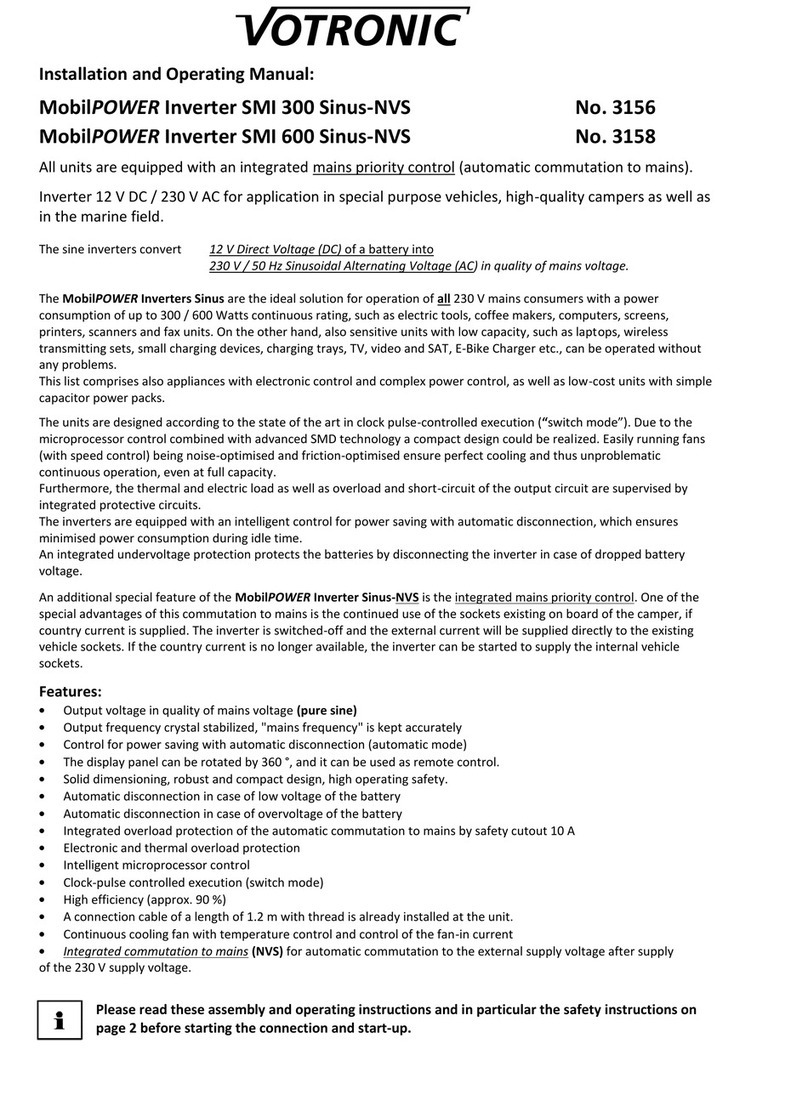
Votronic
Votronic MobilPOWER SMI 300 Sinus-NVS Installation and operating manual

MULTIQUIP
MULTIQUIP Whisperwatt DCA70SSJU4i Operation and parts manual

Kimo
Kimo FrigoPack EC FU+/12 quick start guide
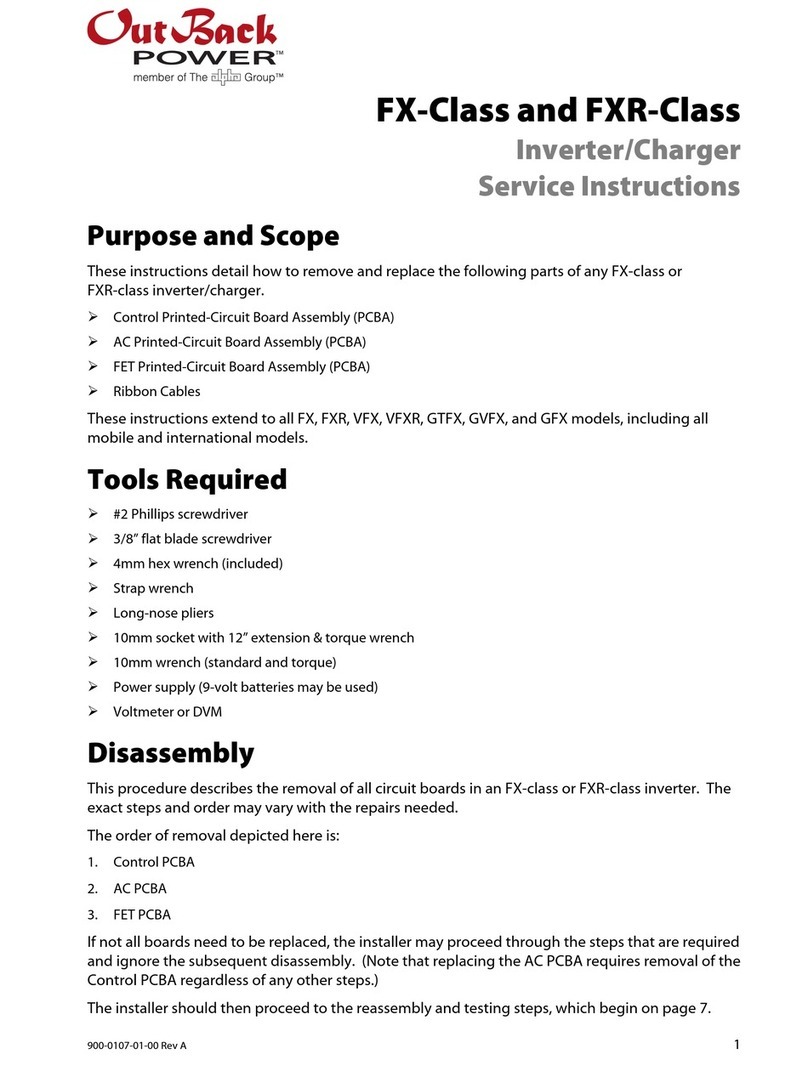
Outback
Outback FX-Class Service instructions
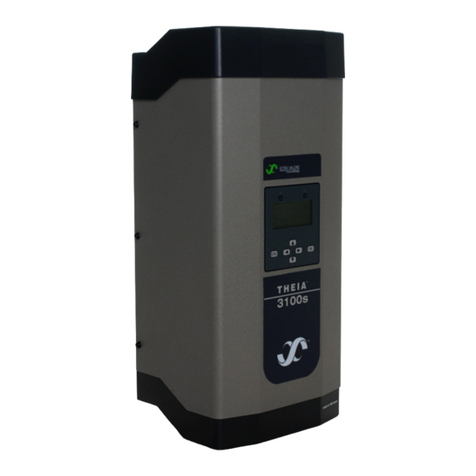
Eltek Valere
Eltek Valere THEIA S user guide

Rohr
Rohr HP-160L manual



